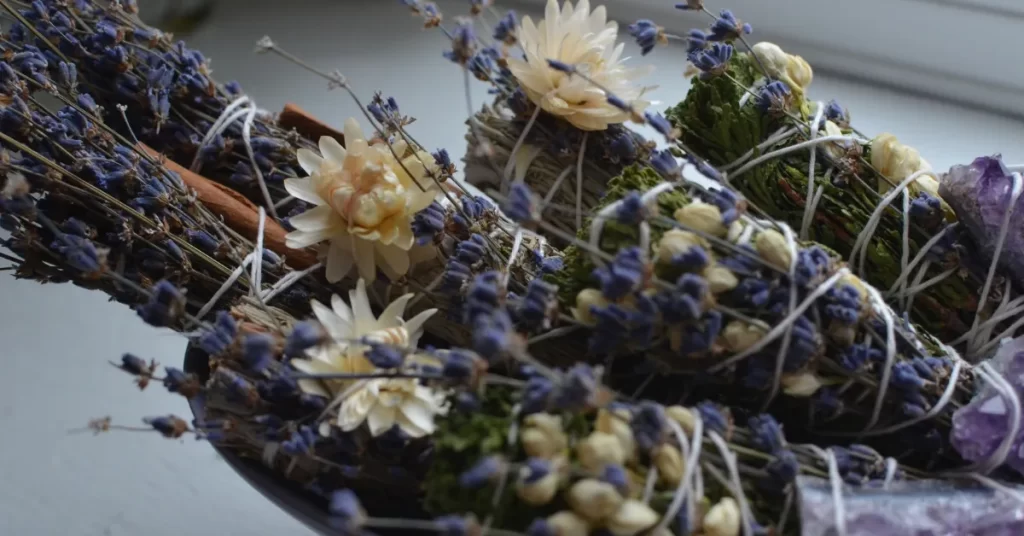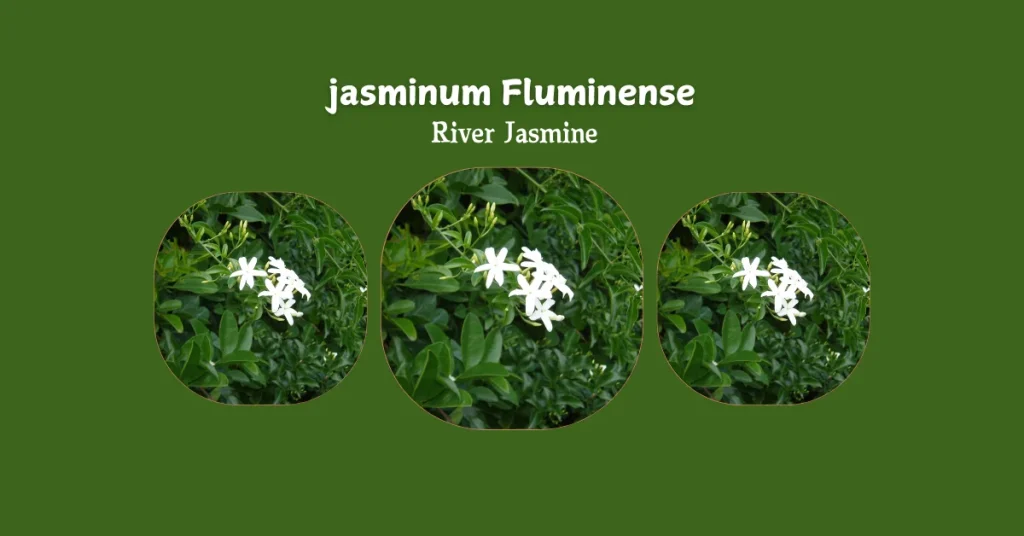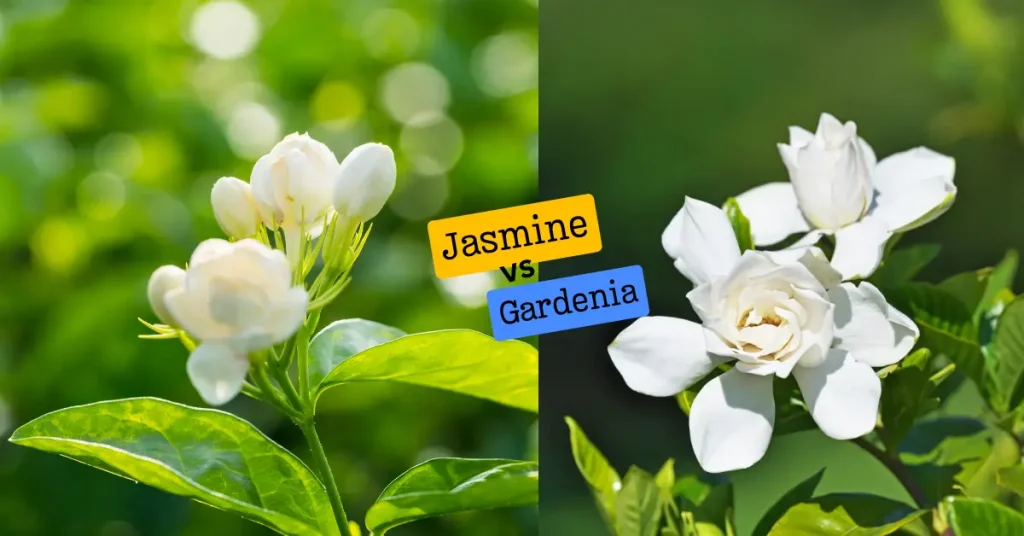Jasmine vs Honeysuckle-Differences and Similarities
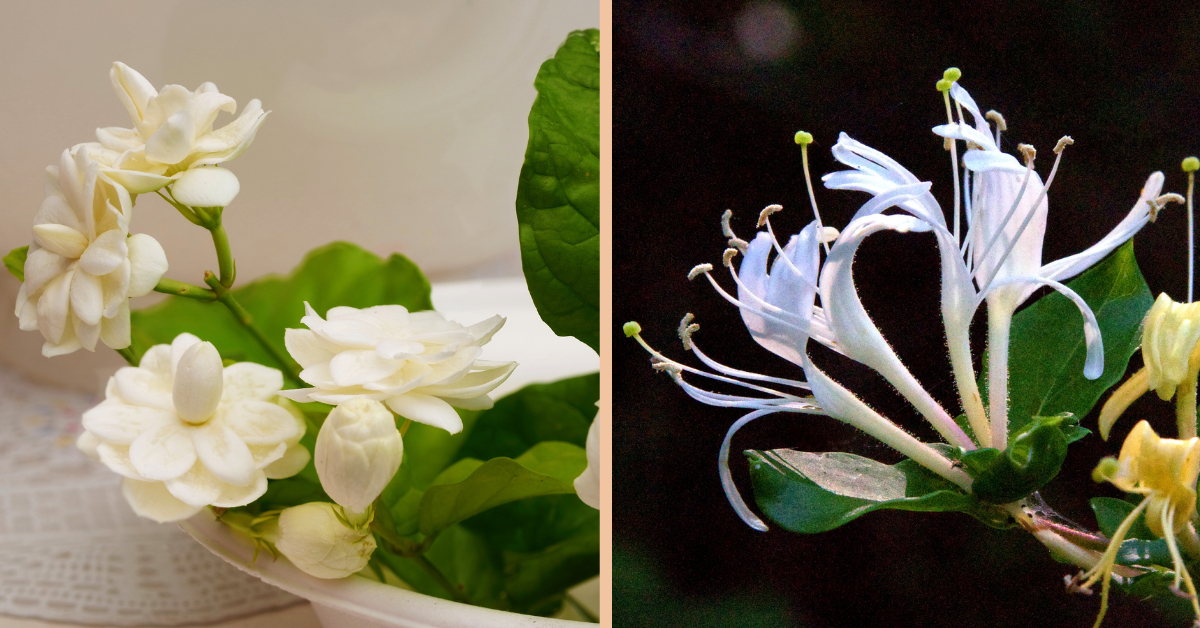
Many gardens and landscapes are decorated with flowering plants, each creating its unique aesthetic. Honeysuckle and Jasmine are both popular choices for those seeking sweet-scented blooms. In addition to their aromatic flowers, both plants exhibit differences in appearance, care requirements, and cultural significance. Are you looking for the perfect gardening plant? Honeysuckle and Jasmine have special significance. Although they differ in many ways, these two plants still have some similarities.
The honeysuckle and jasmine plants are classified differently scientifically. There are several plants in the Jasminum genus that belong to the family Oleaceae and the olive family. Usually known as honeysuckle plants, the Lonicera genus belongs to the Caprifoliaceae family. Continue reading jasmine vs honeysuckle.
Jasmine vs Honeysuckle
A jasmine plant can be deciduous (the leaves fall in the fall) or evergreen (the leaves remain green all year). Different species grow taller and spread farther than others, and some grow or spread upwards. In general, the flower size is 1 inch (2.5 cm). They are yellow and white in color. However, there are some species that are colored red. Plants of this genus typically grow in subtropical or tropical climates, although they can also be found growing in temperate climates.
A jasmine plant’s care must include protection against cold temperatures. Growing jasmine vines provide a fragrant shield for fences, trellises, and arbors. With white, pink, or even yellow-scented flowers, bush types make excellent landscape plants. Despite its minimal maintenance requirements, this plant is worth keeping. There are some Jasmine plants that are not fragrant, but the most popular blossoms are durable and fragrant.
The honeysuckle plant adds excellent color and vibrancy to an outdoor space. These plants attract many pollinators, including butterflies and hummingbirds. Moreover, honeysuckle plants are easy to maintain and have a rather messy appearance, which makes them a good choice for cottage gardens.
The botanical name for Honeysuckle is Lonicera. Among the more than 180 ornamental plants and climbers, honeysuckle belongs to the family Caprifoliaceae. Any outdoor space will look stunning with honeysuckle vines and climbers. Among their many uses in the garden, they can provide dappled shade or a stunning privacy screen. A great carpet of flowers can be created if the plants do not have a vertical support system.
Table of Comparison:
| Feature | Jasmine | Honeysuckle |
| Fragrance | Sweet, floral, slightly fruity | Sweet, honey and citrus blend |
| Flower Characteristics | Small, star-shaped, white clusters | Tubular, various colors |
| Versatility | Shrub, vine, ground cover | Climbing, ground cover, shrub |
| Appearance | Dark green, glossy leaves | Oval, paired leaves |
| Climbing Habits | Twining stems, climbing structures | Vigorous climbing, often on fences |
| Growing Conditions | Well-draining soil, full to partial sun | Well-draining soil, full to partial sun |
Life Span of Jasmine and Honeysuckle
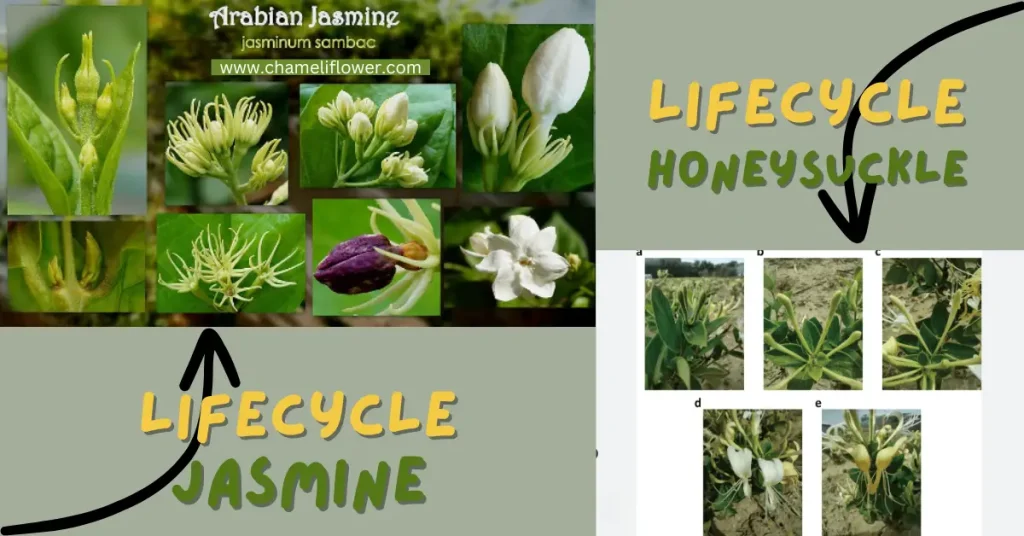
Every plant has a life span, which is the time during which it lives. The life cycle of Honeysuckle and Jasmine can vary and be influenced by environmental factors and genetic factors. Honeysuckle and Jasmine have a perennial life cycle. Jasmine has average life span upto 10 years or more depending upon how it is well treated and honeysuckle has 20 years of average lifespan.
A person can choose the type of plant-based on their needs based on this information. Their growth, habitat, and scientific classification are also different from other plants. The Honeysuckle is classified here as a Flowering Plant, Shrub, and Jasmine is classified as a Flowering Plant, Shrub, and Vines. Using comparisons, you can select the most desired garden plants!
Similarities between Jasmine and Honeysuckle
- As a result of its enchanting and intoxicating fragrance, jasmine is often associated with romance and relaxation. Usually, the scent is described as warm, floral, and a little fruity. In addition to its sweet and heady scent, Honeysuckle also emits a delightful fragrance that can fill the air. A blend of honey and citrus aromas creates a refreshing atmosphere.
- Jasmine and Honeysuckle both attract pollinators such as bees and butterflies, contributing to the biodiversity of a garden.
- Flowers of both varieties normally bloom during the warmer months of the year, adding color and fragrance to gardens in the late spring and early summer.
- Jasmine and Honeysuckle are climbing plants that grow in vines. For gardeners and landscapers, they are popular choices due to their ability to climb walls, trellises, and other support structures.
Differences Between Jasmine and Honeysuckle
Appearance
Jasmine: Typically, jasmine plants have glossy, dark green foliage that complements their delicate white flowers. Depending on the plant, it can grow into a compact shrub or a sprawling vine.
Honeysuckle: Depending on the species, honeysuckle plants often have elongated, paired leaves that are semi-evergreen or deciduous. The tubular flowers give the plant a distinctive appearance.
Classification
The scientific classification of jasmine and honeysuckle plants is different.
Jasmine: Jasminum, or Jasmine, is one of the Oleaceae family, representing the olive family.
Honeysuckle: Honeysuckle plants belong to the Caprifoliaceae family, which is also known as the honeysuckle family.
Color
Have you ever noticed how beautiful a plant is based on its color? The color of plants varies from variety to variety. The color information for Honeysuckle and Jasmine is as follows:
Jasmine:
· Flower color: Pale White and White
· Leaf color: Gray Green
Honeysuckle:
· Flower color: Creamy Yellow, White and Yellow
· Leaf color: Green
Location
Jasmine: It is generally believed that jasmine plants thrive in warm climates. The majority of these plants grow in Texas, Florida, Louisiana, and Georgia.
Honeysuckle: Honeysuckle has a broader distribution. A wide variety of honeysuckle species grows throughout the United States, Canada, and Puerto Rico.
Height
You are not required to have a large landscaping area in order to design a successful garden. Beautiful gardens can also be created in small terrace spaces. The height and width of Honeysuckle and Jasmine plants are the most important parameters to consider.
Jasmine: Jasmine has a height of 180.00 cm and a width of 120.00 cm
Honeysuckle: The Honeysuckle measures 700.00 cm in height and 500.00 cm in width.
Climbing Habits
Jasmine: Jasmine varieties are climbers, using twining stems to ascend trellises, arbors, and other supporting structures. Because of its climbing habit, Jasmine is an excellent choice for vertical gardening or creating green walls.
Honeysuckle: Known for its vigorous climbing nature, Honeysuckle often scrambles over fences and other structures. Its natural screen-like properties make it ideal for making natural screens or creating privacy in the garden.
Growing Conditions
Jasmine: Most jasmines (chameli plants) prefer well-draining soils and can live both in full sun and partial shade. There are a variety of jasmine species that are hardy in different USDA zones, but some may require frost protection.
Honeysuckle: Different varieties of Honeysuckle require different soil conditions, but most thrive in partial or full sun. They are typically hardy and adaptable, so they are suitable for a wide range of climates.
Bloom Time
The bloom season for Honeysuckle and Jasmine refers to the time when their flowers bloom. You can plan your garden better if you know when plants bloom.
Jasmine: The blooming season for Jasmine is Early Spring, Spring, and Late Winter.
Honeysuckle: A honeysuckle blooms during the late winter, spring, and summer months.
Jasmine and Honeysuckle Uses
Known for their fragrant blooms, Jasmine and Honeysuckle are popular flowering plants. These plants are often used and beneficial in the following ways:
Jasmine:
- Jasmine flowers are highly fragrant, and they are commonly used in perfumes and essential oils. Known for its calming and uplifting properties, this sweet and exotic scent is popular in aromatherapy.
- Decorative jasmine plants are common in gardens and landscapes due to their beautiful white flowers. In addition to adding aesthetic value to outdoor spaces, they also smell pleasant.
- Culturally and religiously, Jasmine holds great significance. Some cultures associate it with love and purity. Jasmine flowers are commonly used as offerings or decorative items in religious ceremonies.
Honeysuckle:
- Honeysuckle has a sweet and heady fragrance that is sometimes used in perfumes. There is often a nostalgic and warm feeling associated with this scent.
- The honeysuckle vine is commonly used for landscaping. You can train them to climb walls, fences, or trellises, creating a fragrant and visually appealing display. Ground cover varieties are also available.
- A honeysuckle plant attracts hummingbirds and butterflies with its sweet nectar. In gardens, they provide a food source for pollinators that contribute to biodiversity.
Do Jasmine and Honeysuckle smell similar?
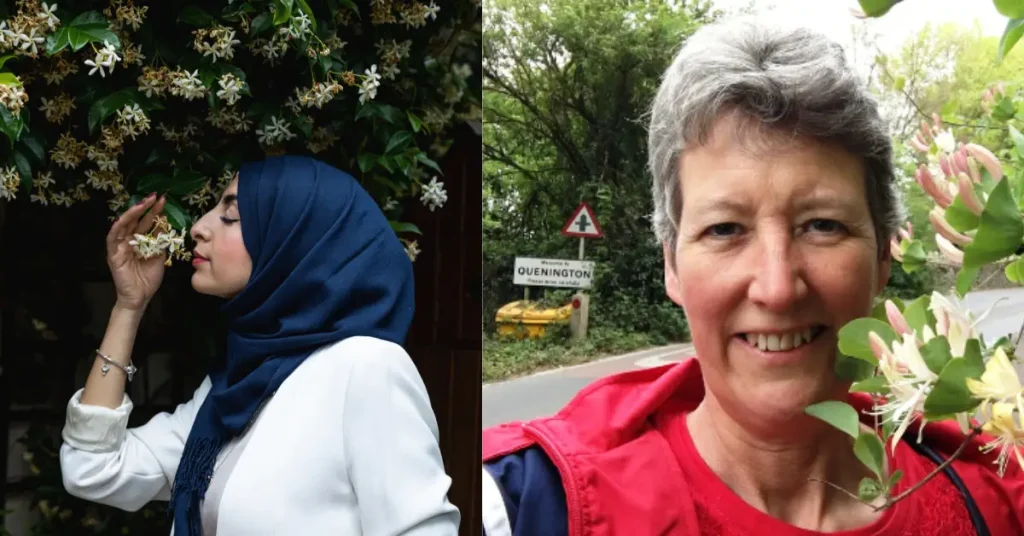
Jasmine and Honeysuckle are relatively similar in aroma. Jasmine has a rich, fruity, and sweet fragrance. The smell of Jasmine is strong and musky and differs from that of other flowers. Due to its fusion of delicacy and wildness, Jasmine’s aroma is universally appealing.
Honeysuckle is characterized by a powerful, rich, warm, and sweet aroma with overtones of honey and ripe citrus. The scent is sweet and heady, with a jasmine-like note tinged with vanilla. In potpourri mixtures, dried flowers are often used.
Final Words
Both Jasmine and Honeysuckle are fragrant flowering plants with unique characteristics that are excellent for gardens and landscapes. Despite their similarities, they differ in appearance, climbing habits, cultural significance, and growing conditions, providing gardeners with a variety of choices based on their preferences.
Whether you choose Jasmine’s timeless elegance or Honeysuckle’s vibrant charm, both plants can transform outdoor spaces into aromatic havens, enhancing them with the beauty of nature. Considering factors such as climate, aesthetics, and their intended use, it’s up to you to determine which plants are appropriate for your garden.

I am Yasir Riaz, an Agronomist for more than a decade. Helping local farmers and Gardeners to improve their crops and Gardens and overall productivity. In addition to my work in agriculture, I have also delved into the digital world as an SEO writer and blogger. Through my blog, I aim to educate and inspire others about the Chameli Flower (Jasmine).

